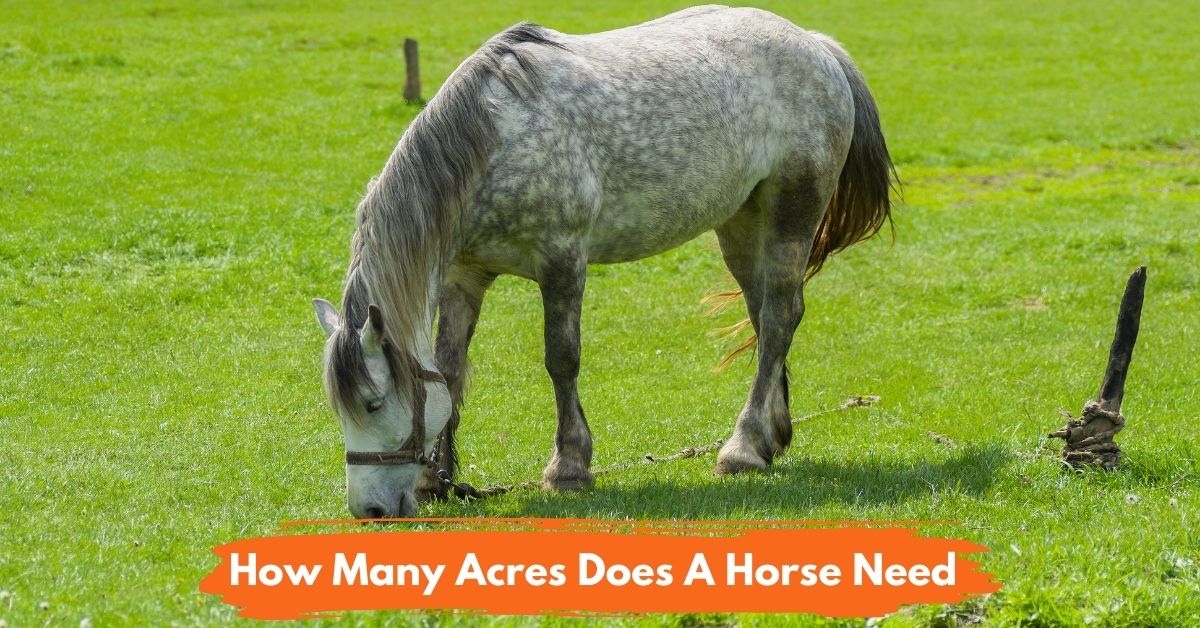
In general, the initial horse needs 2 to 4 acres of lush, grassy land and one extra acre every time you add a horse. You must know this if you choose to raise your horses in a pasture.
A horse is naturally a very active animal that need to be exercised on a daily basis. Moreover, a mature horse will eat 1.0 to 2.0% of its body weight in forage each day, this requires ample land to provide.
However, There are many other things to consider when determining land needs based on an acreage per horse. These include land conditions, overall pasture management, manure management, and stream.
The necessary space for a horse in a pasture also depends on its age and species. You’ll know more about these factors as you continue reading.
How Much Land Do You Need For a Horse?
Even though there’s a recommendation of 2 to 4 acres a horse, it doesn’t apply all the time. Some factors affect the land in serving the needs of an equine. But it’s undeniable that more space is much better.
If you raise your horses on pasture alone, you must place them in a larger area. The area must have 70% vegetation and not more than 30% bare section. The foliage must be 8 to 10 inches tall without weeds.
But the ideal non-grazing space for a horse is 400 square feet or .90 acre. This space can be referred to as a dry lot, exercise lot, stress lot or sacrifice lot. Again, more space is better, so horses have all the freedom to move.
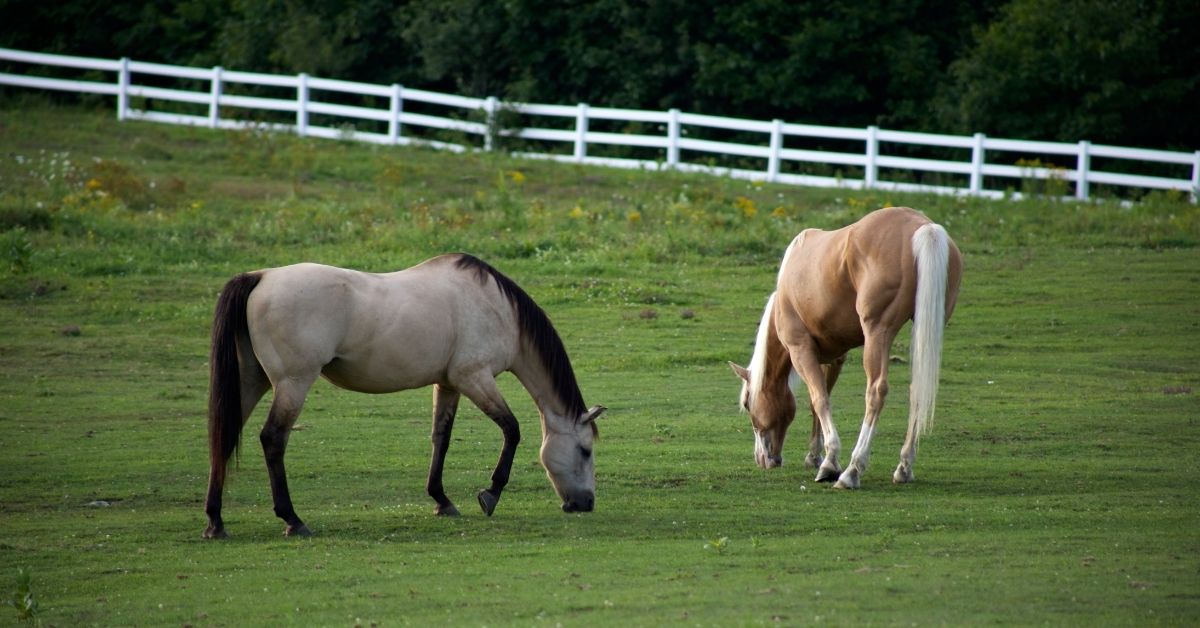
Factors That Affect How Many Acres Does a Horse Need
You must know many factors when you let your horses grow in a pasture. Aside from the grazing space for every horse, here are the other important factors.
Pasture Management
Either your horses will stay in the pasture all the time, or they will remain there for a specific time. When you choose the former, you have to provide more space for your horses. Your land can wear down in no time if it’s overused.
A smaller piece of land needs more extensive care and management. You may need to shuffle the horses. Also, you have to lock them in the stable when the field becomes wet. You may need to seed the pasture more often as well.
The best time to seed is early spring and late winter. You’ll notice that the seed growth is slower in a smaller area. The grasses need more time to grow, especially with frequent grazing.
So, it’s wise to invest in a large acreage. You can let your horses graze on one part if there’s enough space while the other part is on recovery.
Number of Horse
The needed acre of land depends on the number of horses you want to own. Hence, you have to prepare 2 acres for one horse. Then, you should add one more acre if you get another horse.
You must have 5 to 8 acres of land when you own four horses. If your budget allows, you may buy a wider piece of land.
Most horse lovers or hippophiles end up having more horses. It won’t be difficult to decide on getting more horses once you have a larger acreage.
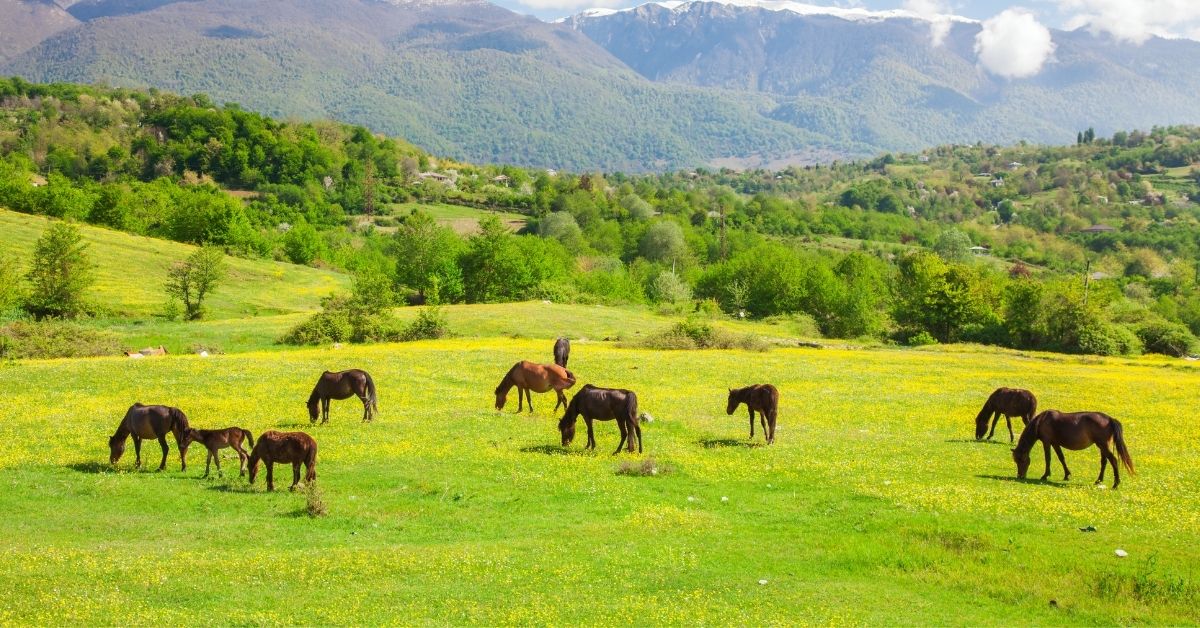
Horses’ Workload
Horses that engage in strenuous activities need more food. They usually take part in jumping, competitions, polo, and show. These horses need more nourishment than pleasure or companion horses.
You have to discuss the feeding plan and proper nutrition with your veterinarian. So, you’ll know if you meet the horses’ needs.
Location and Land Quality
As mentioned, not every pasture provides the same amount of forage. The ideal area has healthy growing grass and edible trees that can fulfill your horses.
It’s not the case when you live in an arid region. The land quality is not efficient in providing for your horses’ needs. Hence, you’re obliged to arrange 40 acres for every horse.
Resources
At this point, you may think that ample space is much better than a limited area. But it’s not always the case. You’ll find hope in this part as I will tell you how to raise horses in a limited space.
You can do it if you don’t fail to provide for your horses’ needs. Less space is not a problem if you look after your horse well. Feed it with enough hay and supplements. Please don’t ignore the need to exercise as it’s essential for good health.
You should know that you can put a horse in a tenth of an acre or 4,500 square feet. This area allows your horse to move around and exercise.
Although every horse is in a small space, you can build a turnout area for exercises. A place of 20 feet by 40 feet is fine, and you can call it a ‘dry lot’.
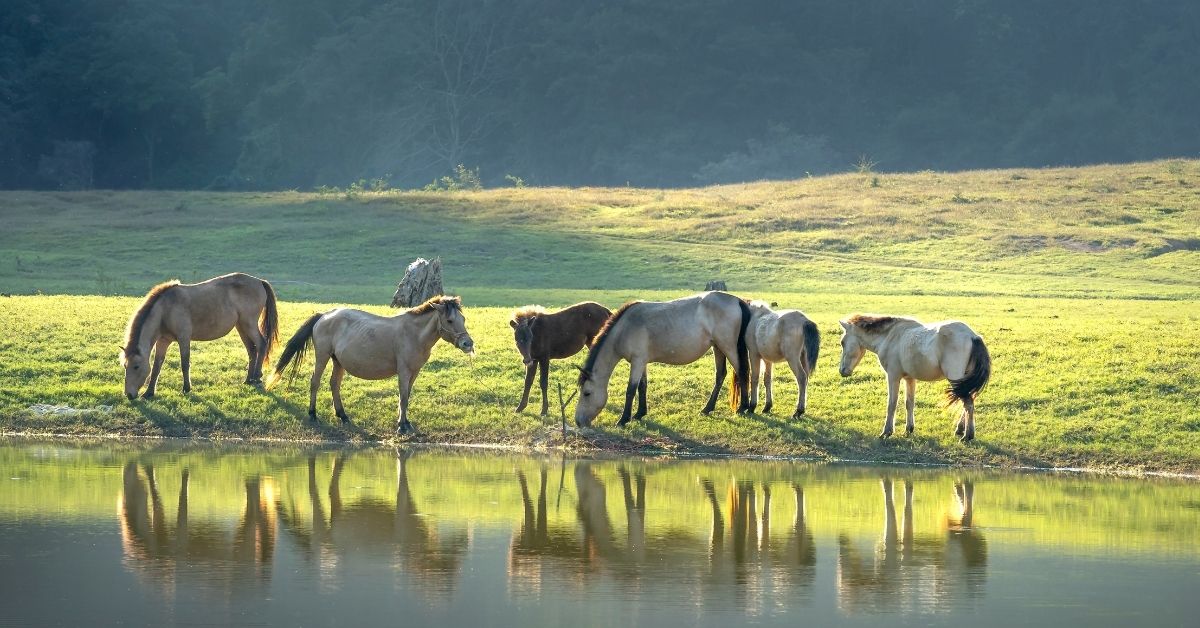
Breed
Since there are different horse breeds, some are larger than others. Due to its large, muscular frame, a draft horse requires more space than a miniature pony.
Hot-blooded or high-strung horses need richer nutrition than cold-blooded or quiet ones. Hence, the latter are ‘easy-keepers’ since minimal hay and feed can sustain them.
Donkeys and mules are fine with less feed, but they need a lot of hay and grass. I also noticed that you could save space if you care for many horses.
But you have to make adjustments to the feed and exercise regime. You have to ensure that the pasture won’t reach the point of overgrazing.
Age of Horses
Older horses are more sensitive than younger ones when it comes to diet. They have dental problems, so they struggle chewing food.
It’s the reason that they might not get all the nutrients that they need. You can offer them supplement or alternative forage like beet pulp.
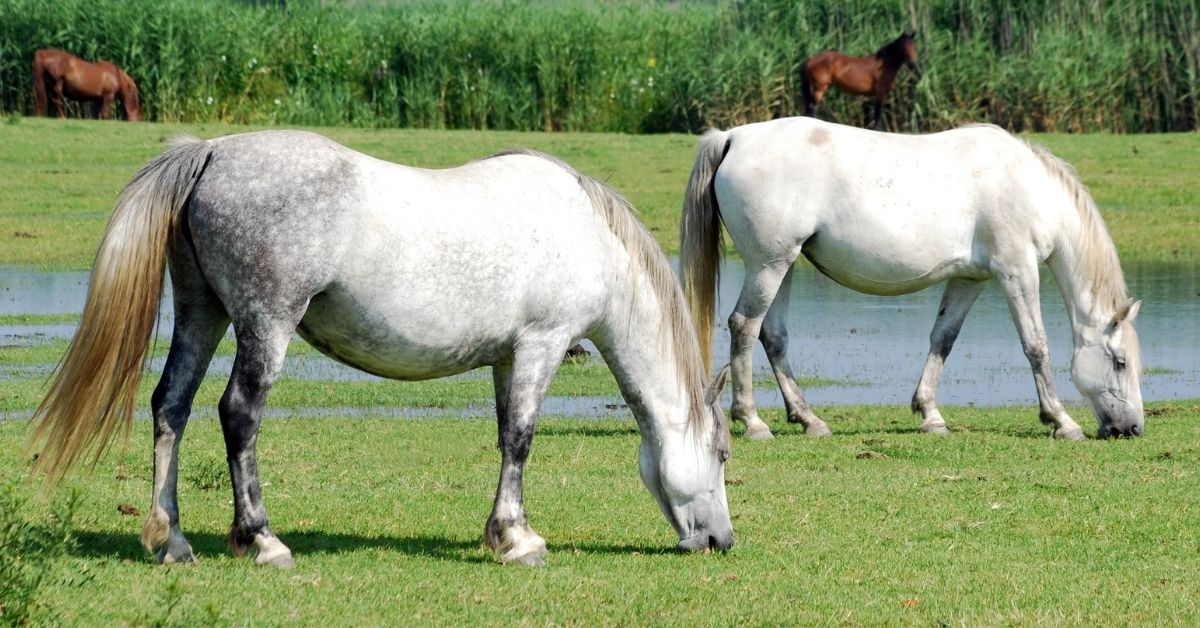
What Is The Ideal Grazing Method?
Some may say that the rule of thumb is 1.5 to 2 acres. But the tested and proven estimation is 2 to 4 acres for every horse. Laura Kenny from the Pennsylvania State University agrees with this statement.
Aside from land requirements, you have to know the grazing methods. They are crucial for the proper management of your horses.
Continuous Grazing And Its Downside
If you put your horse for continuous grazing, give it 2 to 4 acres. In this setting, the pastures are occupied by horses daily, they are not “rested,” or left empty.
You can use the grazing area for a group of horses or several batches that come out to forage. It’s easy and convenient, but the burden is on the forage plants.
Overgrazing is the consequence when you only allot less than 2 acres for every horse. It’s likely to happen as horses are fond of consuming the new growth of grasses.
So, the plants don’t have the chance to get sunlight that they convert into energy for regrowth. Overgrazing leads to the end of grass growth. It gives opportunistic weeds a chance to flourish.
Rotational Grazing And The Ideal Setting
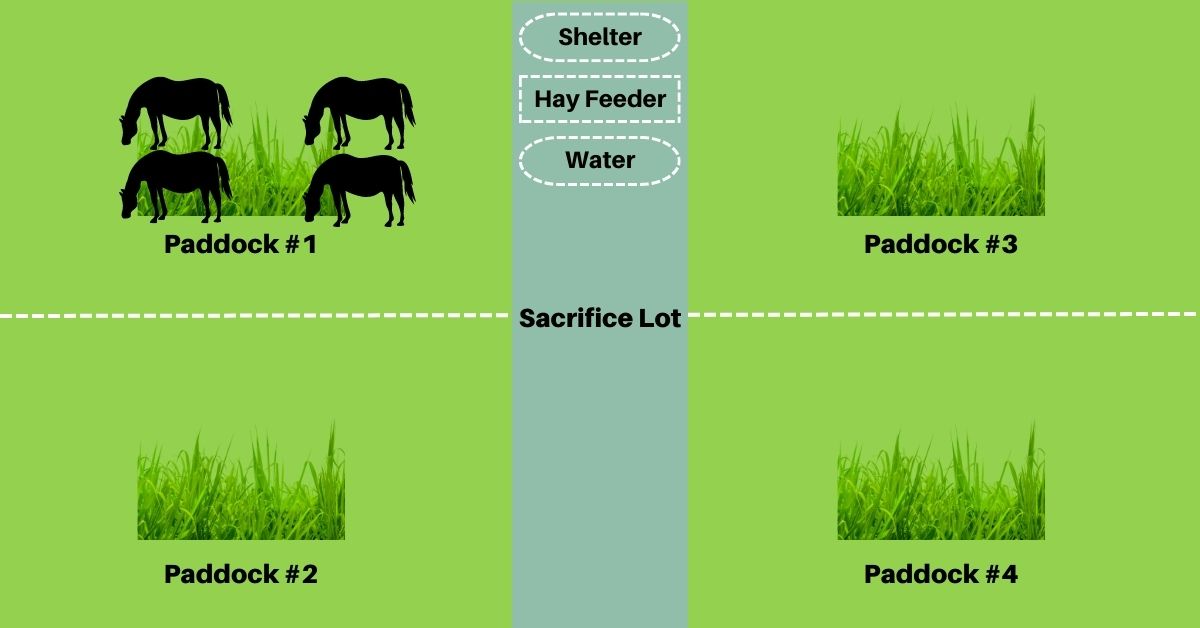
To avoid overgrazing, you have to opt for rotational grazing. It means that you have to move your horses between several paddocks on a regular schedule. This will allow the plants time to regrow while fulfilling your horses’ needs.
The forage height is the basis for deciding the perfect time for grazing. So, it’s not always about the schedule.
It’s no use if you follow the schedule, but the grass is not enough for your horses. Note that these animals should stay in a paddock for not more than seven days. It’s knowledge shared by farm managers.
But it may be longer, and you’ll need 6 to 8 weeks to grow the forage. For instance, cool-season grass has a slow recovery in areas with hot summers.
So, every farm manager should study things about rotational grazing. It’s crucial to know the surroundings and season when practicing rotational grazing.
How Many Horses Are Too Many?
This question is easy to answer. Beginners should weigh the economic aspect. If you find it hard to provide for your horses’ needs, there’s no doubt that you have too many horses.
Other signs are overgrazing a pasture and putting a limit on resources. You’ll end up selling some horses as you fail to provide for their needs.
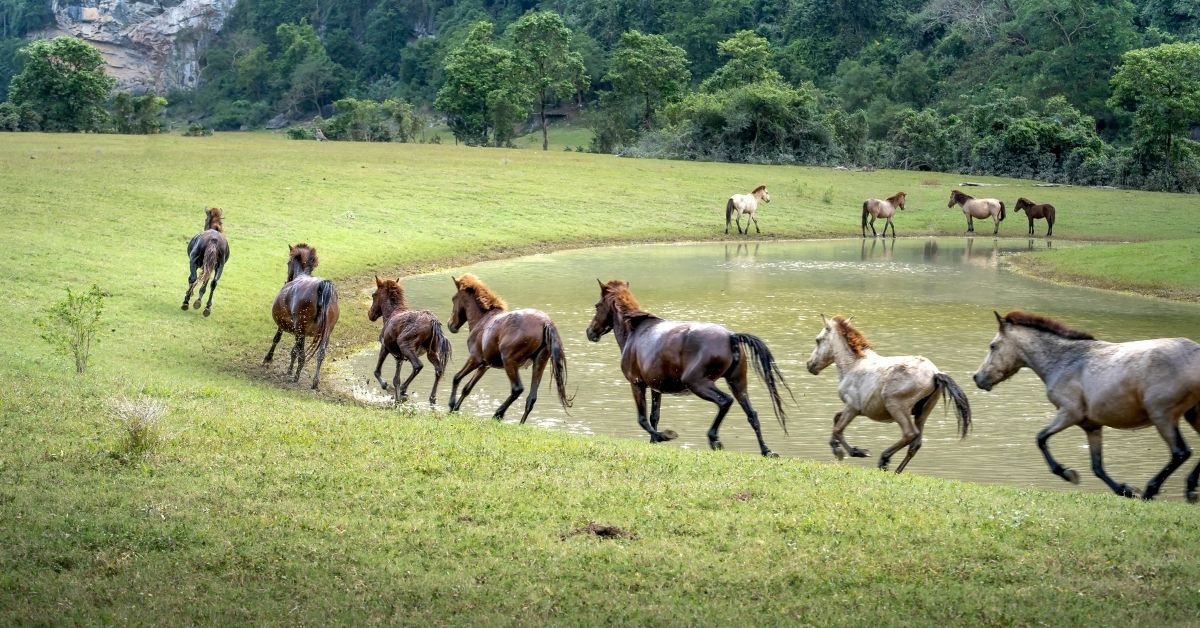
Legal Requirements in Your Jurisdiction
Aside from the recommended pasture size, you must be aware of state laws and local ordinances. The laws vary from state to state. For example, the constitution of New York set some limitations. People can only have a pasture for horses in an agricultural district.
Commercial equine boarding and operations should only be 7 acres wide. But there are no limitations on the number of horses per acre.
The laws may be different in other states. So, you must check with your local authority before making plans for your horse farm. Although the least space for every horse is 2 acres, you still have to refer to your state’s laws.
Conclusion
Every horse that thrives in a pasture needs 2 to 4 acres. But you may need to increase the area when you live in an arid region. The amount of forage and plants also matters. Horses’ age and breed also affect your decision about the grazing site.
You can lower the allotted space for every horse if it’s only for exercise. But providing more space for your horses is good.
Check your local laws and regulations about horse keeping or farming. So, you know that your plans don’t go against the mandates.
FAQs
How Much Grazing Time Per Day Do Horses Need?
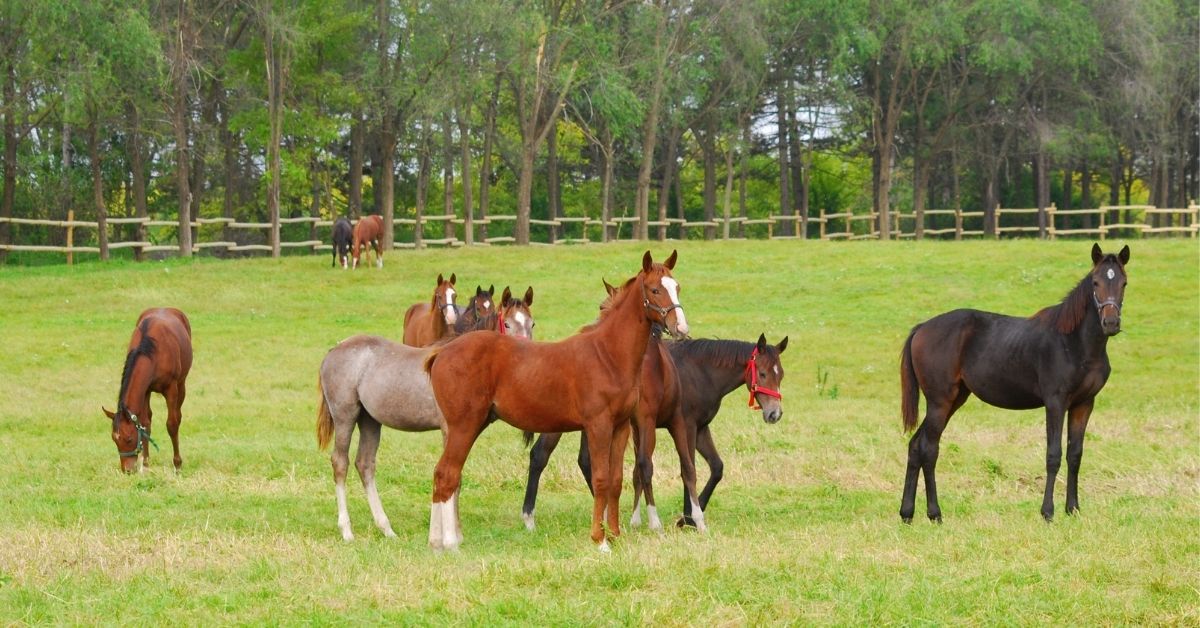
Most think that more time for turnout gives a horse more grazing time. But this is not true. You should know that equines can’t get the proper nutrients by grazing alone. They’re rather aware of time constraints and react to them.
Horses would make the most of their time munching the grass. It’s when they notice that they have less time for grazing. This action benefits them if there’s adequate intake.
Good quality pasture is the ideal food source for horses as their herbivores. They can get crude protein and digestible energy from forage. But you have to watch out for overeating, as it can lead to health issues.
How Many Horses Can You Have in 5 Acres?
Based on the basic rule of giving 2 to 4 acres to a horse, you can have 2 to 3 horses in 5 acres. But if you only use the land for exercises, you can place 50 horses on 5 acres of land.
You can do it as 4,500 square meters, or a tenth of an acre is enough for each horse to move around.
How Many Horses Can You Have in 10 Acres?
You can have 4 to 5 horses to graze on 10 acres. The number of horses will depend on your location and land condition. Again, the basis is 2 to 4 acres per horse.
If you use 10 acres of land to let your horses roam around, it can accommodate around a hundred of them.
How Many Acres Do 2 Horses Need?
You have to prepare at least 4 to 5 acres for two horses. That is if you raise them full-time in the pasture.
Giving more space to your horses is not a bad idea. It’s a must if you live in a dry region where forage may not be adequate for the horse’s needs.
